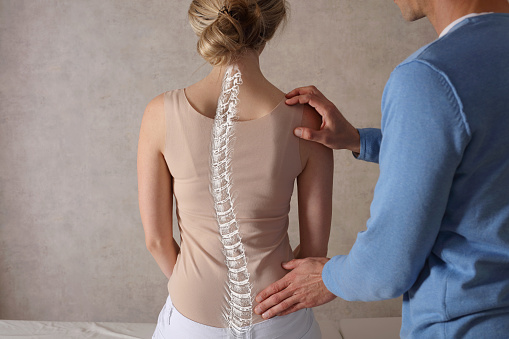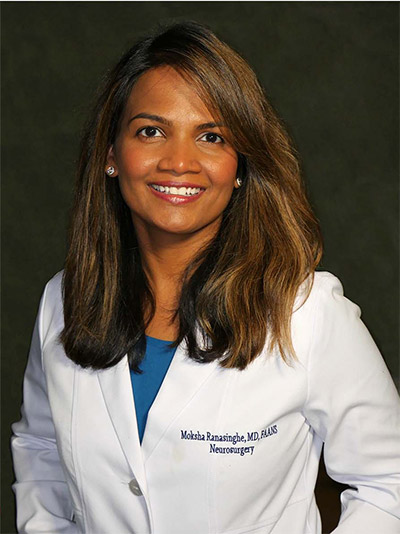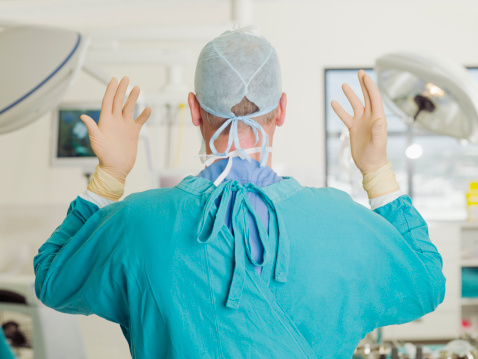- (213) 369-4583
- Monday - Friday
- 9 am - 5 pm
Scoliosis Surgery: What is it and how is it performed?

Sep 06, 2022
Scoliosis is a spinal deformity in which the spine is curved sideways. It is most commonly found in adolescents who are born with it for reasons yet to be discovered. However, adults can also develop scoliosis due to degeneration of discs or reasons that could not be discovered during childhood like cerebral palsy.
If the curve in the spine is mild, doctors keep it under observation with regular X-rays to make sure the curve is not getting worse. However, surgeons perform scoliosis surgery to restore the original form of the spine in cases of severe curvature.

See a Spine Surgeon in Los Angeles for Scoliosis Surgery
In cases as sensitive as Scoliosis, it is recommended that you see a spine specialist for comprehensive diagnosis and treatment. If you are in Los Angeles, you can visit Southern California Brain & Spine Surgery and see Dr. Moksha Ranasinghe for Scoliosis treatment. She has been treating patients with spine diseases for many years and has been rated as the best spine surgeon in Los Angeles for three consecutive years by findatopdoc. You can schedule an appointment with her by filling out the patient form or calling (213) 369-4583.
Types of Scoliosis
Based on the causes, we can categorize scoliosis as follows;
Congenital Scoliosis
Congenital scoliosis starts developing when a baby is inside his mother’s womb. During fetal development, incomplete formation of vertebrae results in a sharp bend in the spine.
Neuromuscular Scoliosis
Neuromuscular scoliosis is another very common type of scoliosis mostly found in kids. Sometimes weakening of back muscles due to conditions like Spina bifida and cerebral palsy causes the spine to bend. It happens because back muscles fail to provide the necessary strength and thus the spine loses its shape.
Degenerative Scoliosis
This form of scoliosis is more likely to be found in adults than in kids. It occurs when a spine gets deformed due to wear and tear. Degeneration of the spine is a result of aging, tumors, infections, or arthritis.
Idiopathic Scoliosis
When the cause of scoliosis cannot be identified, people commonly refer to it as idiopathic scoliosis. Like congenital scoliosis, it is present at the time of birth for unknown reasons. It is commonly understood that idiopathic scoliosis results from genetic factors that run in families.
Who Qualifies for Scoliosis Surgery?
As mentioned earlier, healthcare professionals treat mild curvatures or bends in the spine nonsurgically, using methods such as braces, massage, and physical therapies. Curvature is considered to be sharp and problematic if;
- It is greater than 50 degrees (in kids who are still growing)
- It is greater than 50 degrees that have progressed more than 10 degrees (in patients who have reached skeletal maturity)
- Hindering the functionality of the parson
- Causing unbearable pain
- Becoming problematic for the heart and lungs
Scoliosis Surgery

Provided that the conservative treatments for Scoliosis fail, doctors recommend patients for surgery. Spinal fusion is the most common surgical procedure used to cure scoliosis.
Spinal Fusion Surgery
In this procedure, the doctor fuses the vertebrae to remove the bend in the spine and correct its deformity. The fusion is carried out by using bone grafts or metal implants like rods and screws. Spinal fusion is found to be effective in restoring curvature by 50 percent or more.
Procedure
The doctor will make an incision to reach where fusion needs to be performed. For this purpose, an Anterior or Posterior approach can be used. In the former approach, the surgeon approaches the spine from the front rather than from the back like in posterior surgery. Posterior is the most frequently used approach when it comes to treating scoliosis and adolescents or adults.
Once the surgeon has access to the spine, he/she will make adjustments to remove the curvature and straighten the spine. It also involves placing the rods or bone grafting material acquired from the patient's body. The whole procedure can last anywhere between 4 to 8 hours depending upon the severity of the curvature and the number of points where fusion is needed. After the surgery is complete, the incision is stitched.
In addition to anterior and posterior surgical procedures, surgeons also perform minimally invasive surgery (MIS), also known as Video-Assisted Surgery. Surgeons use advanced cameras and surgical equipment in MIS to perform spinal fusion. The surgeon performs the complete surgery through a very small incision in the body. MIS is preferred due to its ability to cause less pain and involve a very short recovery period.
Recovery after Scoliosis Surgery
Undergoing fusion surgery only completes half the task. To achieve complete vertebrae fusion, you must follow a comprehensive recovery plan involving medication, physical therapy, and a recommended diet. You will be able to move after two to three days of the scoliosis surgery. To fully recover and go back to doing normal physical activities can take anywhere between 6 to 12 months. For a smooth recovery from the scoliosis surgery, follow the instructions given below;
- Take complete bed rest during the first week after the surgery to let the wound heal.
- Keep the incision site clean and dry
- Avoid bending or twisting your back
- Take protein-rich food, fruits, and vegetables
- See a physiotherapist for helping yourself with the recovery process. He will chalk out a plan for you that will involve light exercises and massages.




